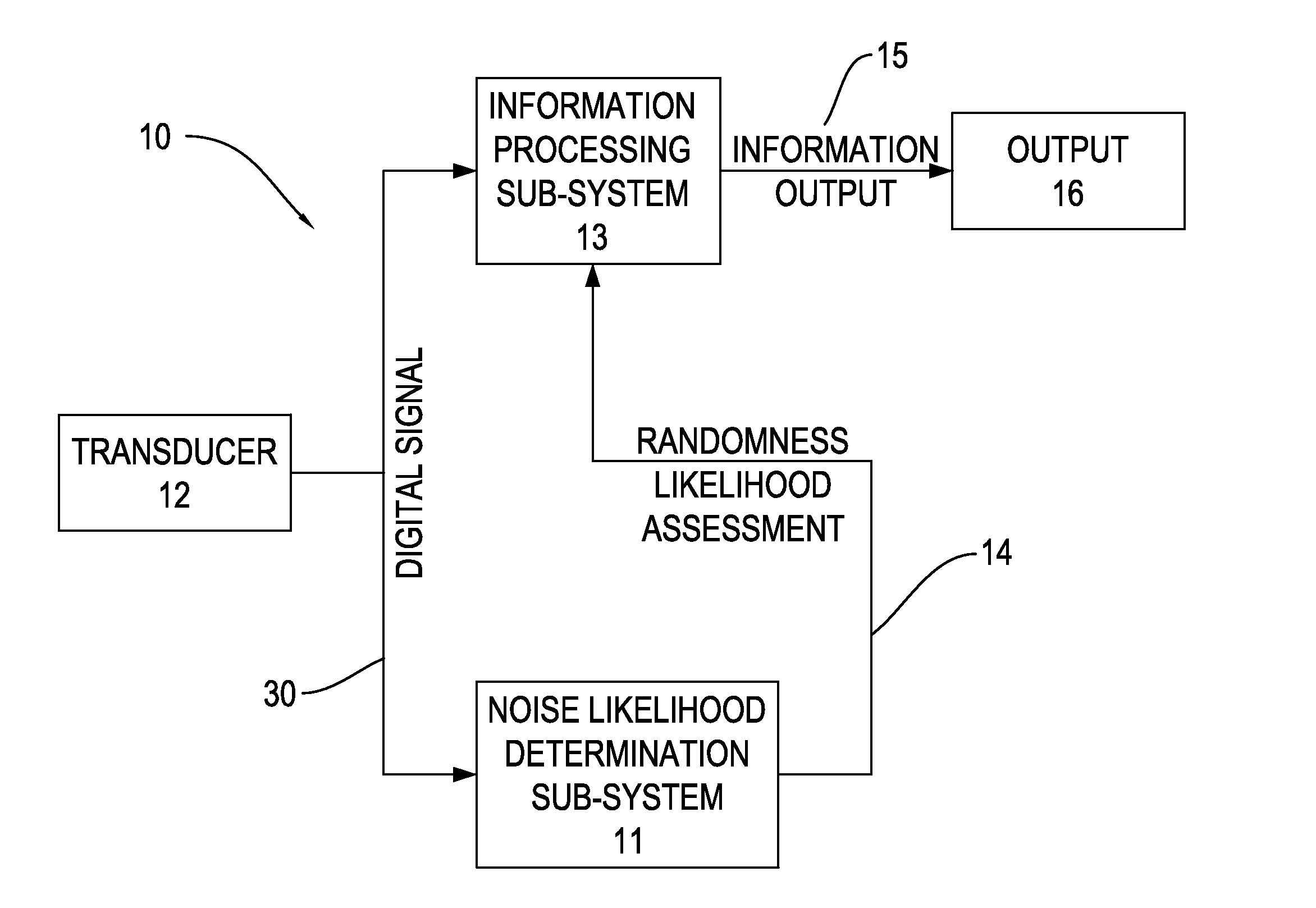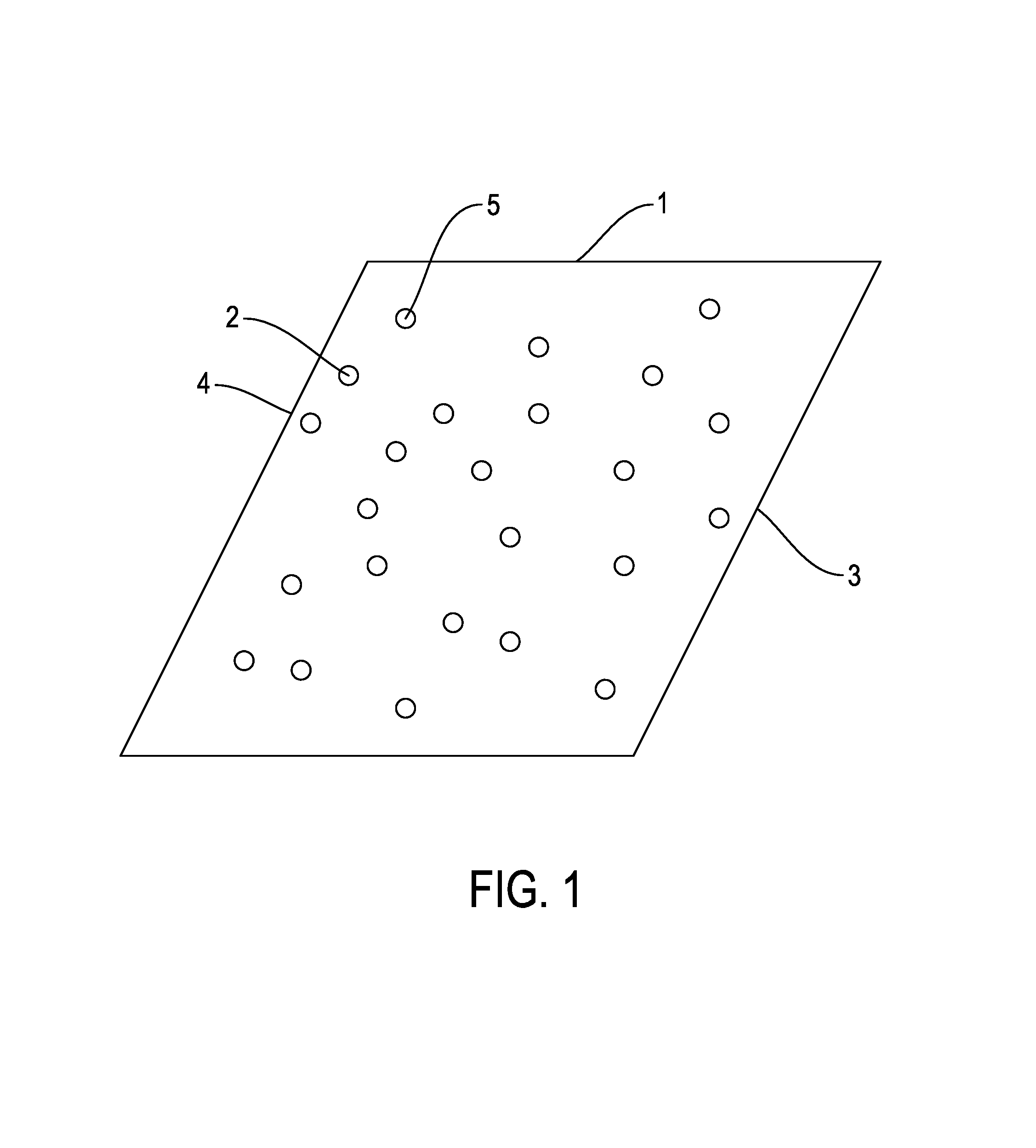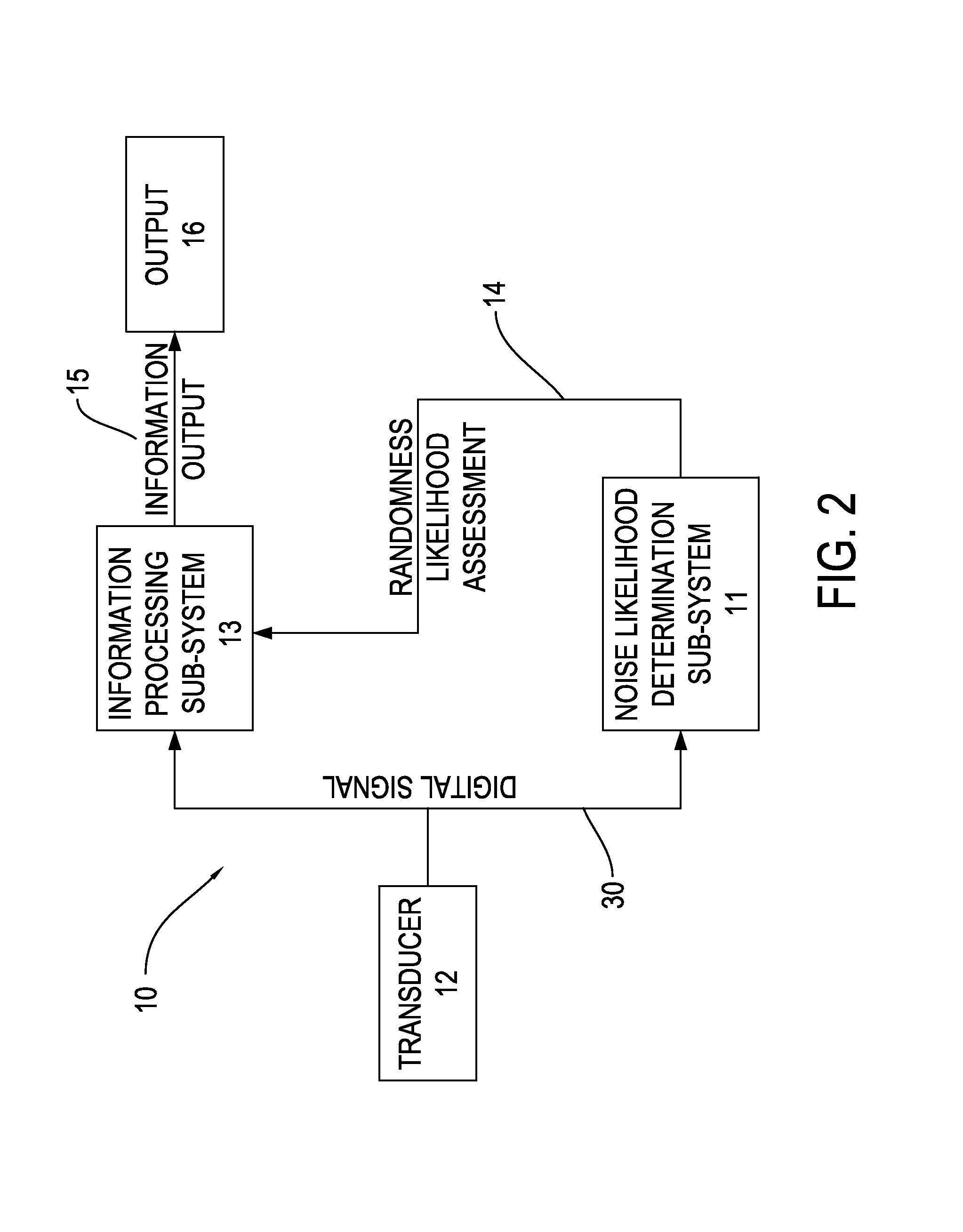System and method for detection of noise in sparse data sets with edge-corrected measurements
a data set and sparse technology, applied in the field of system and method for detection of noise in sparse data sets with edge-corrected measurements, can solve problems such as incorrect conclusions, and achieve the effect of increasing the probability of a correct result and enhancing the randomness sub-system
- Summary
- Abstract
- Description
- Claims
- Application Information
AI Technical Summary
Benefits of technology
Problems solved by technology
Method used
Image
Examples
Embodiment Construction
[0023]The invention provides a signal processing system 10, including a noise likelihood determination sub-system 11. FIG. 2 is a block diagram of a signal processing system 10. With reference to FIG. 2, the signal processing system 10 includes, in addition to the noise likelihood determination sub-system 11, a transducer 12, an information processing sub-system 13, and a randomness likelihood assessment output 14. The transducer 12 receives the signal, which is in acoustic, electrical, electromagnetic, or other form, and converts it to preferably digital form for processing. The digital signal may, for example, represent the amplitude of the received signal sampled at successive time intervals. The information processing sub-system 13 performs conventional signal processing operations, such as adaptive and other filtering, to attempt to extract an information component from the digital signal. In accordance with the invention, the noise likelihood determination sub-system 11 determ...
PUM
 Login to View More
Login to View More Abstract
Description
Claims
Application Information
 Login to View More
Login to View More - R&D
- Intellectual Property
- Life Sciences
- Materials
- Tech Scout
- Unparalleled Data Quality
- Higher Quality Content
- 60% Fewer Hallucinations
Browse by: Latest US Patents, China's latest patents, Technical Efficacy Thesaurus, Application Domain, Technology Topic, Popular Technical Reports.
© 2025 PatSnap. All rights reserved.Legal|Privacy policy|Modern Slavery Act Transparency Statement|Sitemap|About US| Contact US: help@patsnap.com



